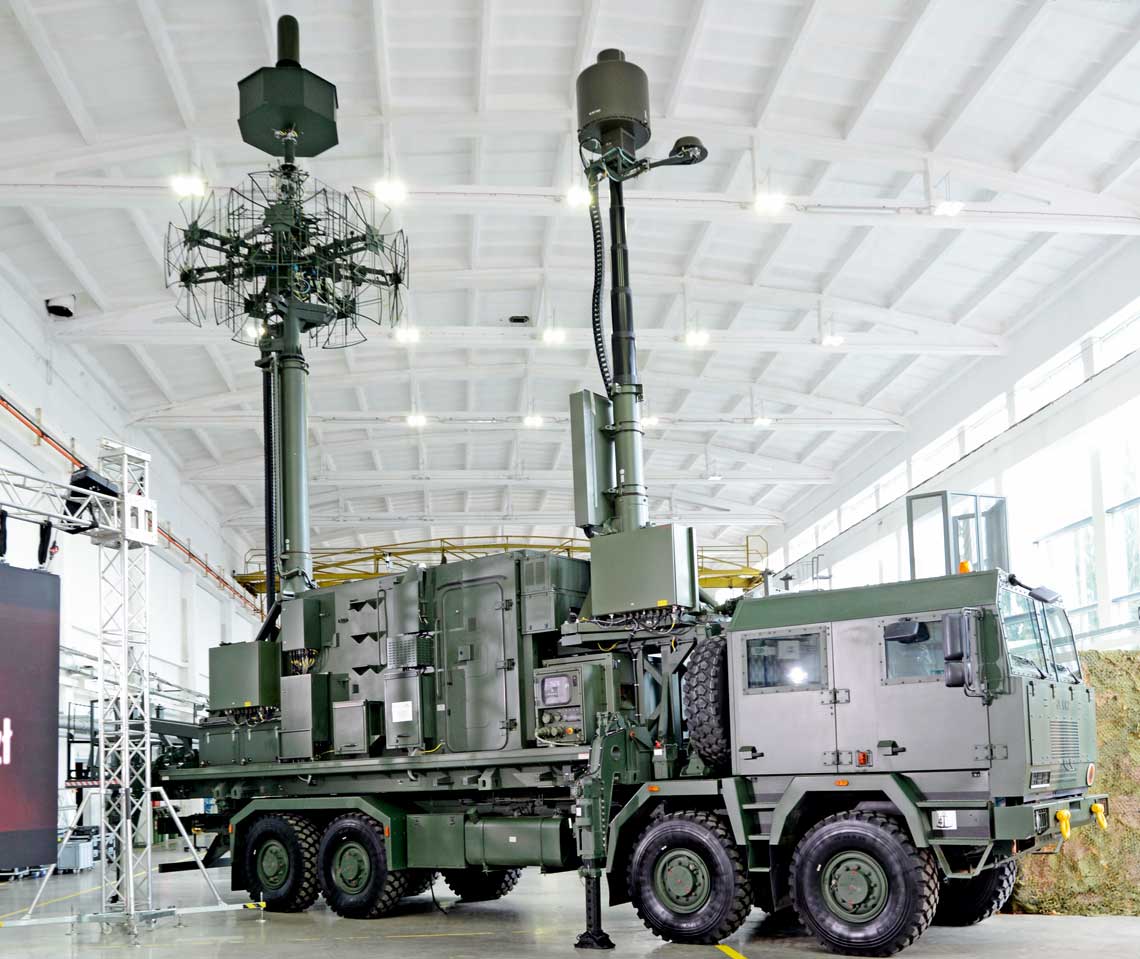
PET/PCL system premiere

Prototype of PET/PCL system station on high-capacity and mobile carrier Jelcz P882.53 in 8×8 configuration.
The contract for the first phase of the Vistula program was signed at the enterprises of PIT-RADWAR SA, owned by Polska Grupa Zbrojeniowa SA, in one of the halls, which in recent years has become a venue for various celebrations. On their occasion, new products were often more or less officially introduced, sometimes still under development. This time, nothing has changed, and the backdrop of the event was the PET/PCL Passive Radar Station Prototype, which was presented to the general public for the first time.
A passive radar system that allows determining the location of airborne objects through a combination of methods for analyzing electromagnetic radiation generated by PET (Passive Emitter Tracking) of airborne objects in the range of 20 MHz ÷ 18 GHz, and using electromagnetic radiation from local PCR (Passive Coherent Location) emitters, should be one of two (next to the P-18PL meter-range radar) of the main means of initial detection and target designation for medium-range (Vistula) and short-range (Narev) anti-aircraft systems. It was developed by the consortium PIT-RADWAR SA (leader), Politechnika Warszawska and AM Technologies Sp. z oo Sp.k. within the framework of the development project O ROB 0043 001, co-financed by the National Center for Research and Development under the competition No. 3/2012 for the implementation of projects in the field of research or development work on defense and security of the state. The contract for the implementation of the project No. DOBR/0043/R/ID1/2012/03 was concluded on December 18, 2012. It provided for the development, implementation and testing of a prototype complex consisting of four stations: one corresponding to the IX level of technological readiness and three representing the VII level technological readiness, otherwise called laboratory stands. The basic contract provided for the implementation of the project in three stages: I - development of system assumptions, including: development of the concept of operational use of the system, analysis of the possibility of using a passive location system in conjunction with system communications and installation of the system on a common mast and in a radio link container or optionally in combination with early detection station, development of an analysis of the requirements for a communication system, tactical and technical assumptions, a conceptual design and the scope of a prototype study; II - development of a prototype (determination of design solutions, preparation of a preliminary design, development of a technical design, construction of a prototype and preparation of its technical documentation); III - testing of the prototype (preliminary, qualification, finalization of technical documentation). The cost of the project was set in an agreement dated December 2012 at PLN 45 million, of which PLN 38,7 million is co-financing. The completion date for the project is December 17, 2016.
However, the above schedule quickly became outdated, mainly due to the lack of formal grounds for starting the project at the time of signing the contract, i.e. preliminary tactical and technical assumptions adopted by the military. Already during the preparatory work on the first stage, the implementation of the project was actually suspended for more than a year and a half. Between November 21, 2014 and June 1, 2016, the Ministry of National Defense conducted a so-called project critical review, which resulted in recommendations for adapting the system to the needs of the Polish armed forces. Therefore, it was recommended to introduce: additional systems for detecting electromagnetic radiation in the RTR (Electronic Intelligence) subsystem, car cabin armor, software and hardware for recording signals from digital receivers, and an additional power source. Due to a break and the need for additional work, the project implementation period was postponed to June 17, 2018 by the relevant annex to the contract. In the first quarter of last year, the financial performance of the project was 86%.
The above information is obtained, in particular, from the response dated April 7, 2017 to the request of Deputy Tomasz Semoniak dated March 3, 2017 on the status of development work for national defense. The formal situation must have changed since then, as the site of the consortium leader provides updated information about this project. According to them, its completion should take place in 2020, and the budget has increased to PLN 70,2 million, of which PLN 62,9 million has been allocated for co-financing.
The 28th phase of the project is currently underway, and on March 882.53, a prototype system station corresponding to the IX technology readiness level, placed on the Jelcz P8 lifting and mobile carrier, as part of the 8 × XNUMX location, could be seen. After the development process is completed, the Polish Armed Forces have a chance to acquire an effective, completely passive airborne target detection system, the accuracy of target location of which is not much inferior to classical radar stations (under favorable conditions). Given the combination of PET and PCL methods, the Polish system, after entering operational service, in a few years can become a unique solution in its class in all NATO countries.